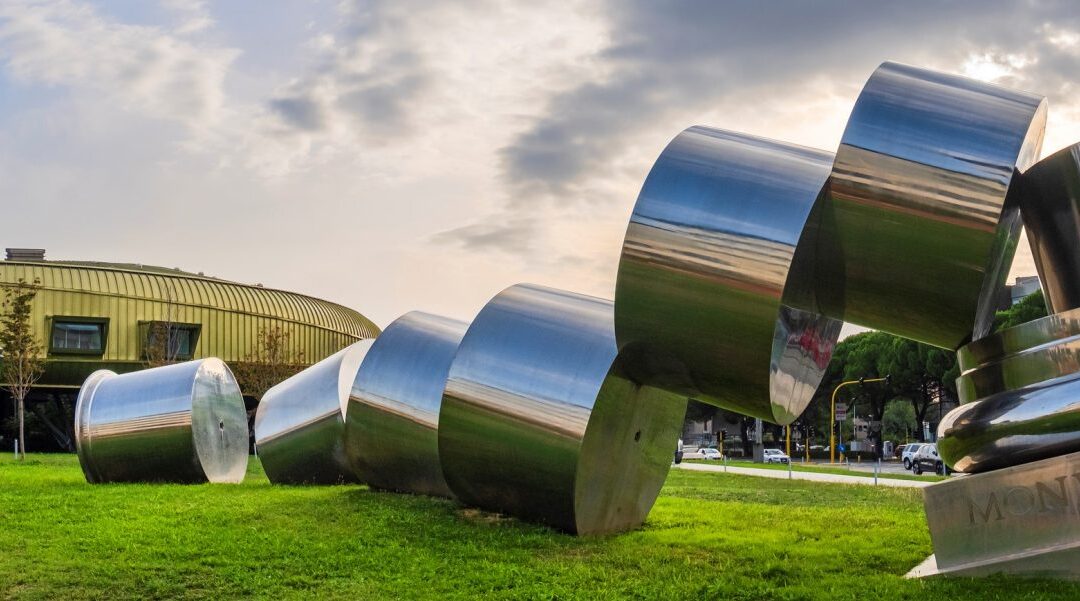Maintain outdoor displays in any season or climate
Outdoor sculpture parks —from the Walker Art Center in MN, to Glenstone in VA, and Storm King in NY — are drawing visitors who relish a non-traditional art experience. Extending the exhibition space to the outdoors or park settings can stimulate new visual and sensory experiences; yet it also exposes the artwork to the vagaries of weather and living creatures (especially humans). Therefore, an outdoor sculpture is more challenging to preserve than a work displayed indoors.
While museums have professional conservators to care for outdoor collections, private collectors need to recognize that artworks displayed in the open need regular inspections and maintenance to help ensure their long-term preservation.
Outdoor Sculptures: Outdoor Decisions
Regular maintenance does not require an extensive investment of time, but is of great benefit for outdoor sculpture. This includes simple measures like regular cleaning, which, if done at least annually, can mitigate the challenges of outdoor display and help detect damage in its early stages.
The first consideration when contemplating art placement in the elements are the local weather patterns:
- Is the property in a flood zone?
- Is this an area with frequent thunderstorms and hail?
- Are hurricanes or other natural disasters possible?
- Are there below-freezing temperatures in the winter?
When considering a suitable location on your property, be aware of trees that could potentially fall over in a storm. Also, sculptures should be placed away from pools, as the chlorinated or salt water could erode the surface of the sculpture.
One should also consider security. Thieves who target outdoor sculpture are more often interested in melting down the metal for scrap resale rather than flipping the artwork on the black market. Attaching the sculpture to a base, either above or below ground, can help both to stabilize the work and make it more difficult to steal. Security cameras focused on the artwork as well as motion sensing detectors nearby are other possibilities if theft is a concern.
Most importantly, if you are considering displaying an artwork outdoors, ask the gallerist or artist from whom you have purchased the work if they can provide advice on appropriate installation and upkeep.
Rinse and Repeat
Constant exposure to the elements can cause outdoor statues and sculptures to crack, grow moss or mildew, change color, and deteriorate over time. Bird droppings, animal activity, pollen and other plant materials can aggravate the surface of sculptures causing splotchy surfaces. Keeping your outdoor garden statues clean will ensure their longevity.
Ceramic, stone, concrete, and masonry sculptures are primarily subject to damage through freeze/thaw cycles, impact, vandalism, and efflorescence of soluble salts.
Cleaning can often be done with nothing more than tap water and a hose. Although this may seem simplistic, rinsing a sculpture with water removes soil, industrial particulates, bird droppings, and other pollutants. Sculptures composed of iron, steel, ceramic, stone, or concrete should be cleaned by rinsing at least once a year. Use a garden hose with a gentle setting, like shower or mist, to rinse your statues.
If you live in an area with hard water, a final misting rinse with distilled or deionized water delivered through a clean garden sprayer will help prevent mineral deposits and water spots. Never use a power washer!
It is recommended that bronze sculptures be washed with a clear, unscented detergent and receive a new coat of wax at least once a year. If you have decorative outdoor sculptures, you may add a new coat of wax every year to help protect the surface. If you own sculptures by an artist, do not add any sealants or waxes without consulting the artist first, as adding finishes could change the surface of the object.
Some sculptures, such as Richard Serra’s large COR-TEN steel sculptures, are meant to oxidize, developing a patina-like rust film on the surface over time. If you notice scratching on your stainless-steel sculpture, it is best to consult a conservator. The abraded surface can become electrically active and susceptible to rusting.
While rainstorms are common in many areas, dust-storms, hurricanes, hail and high wind often cause more severe damage.
Emergency planning for outdoor sculptures
The best emergency preparation is set before an extreme weather event. Having a plan to act will reduce stress during these events and help minimize potential damage.
- Wind – in the case of hurricanes, there are a few options for outdoor sculpture care, and it depends on the art.
-
-
- Identify any outdoor sculpture you could bring indoors.
-
-
- When choosing an indoor room for temporary art storage, aim for the one with as few openings (doors and windows) as possible. Garages are not normally your best option, as this is one the largest openings in a home and therefore the most vulnerable.
-
-
- Create an on-site protection plan.
-
-
- Sometimes the art is displayed in a way that creates difficulties in having the piece moved. In that case, creating an on-site protection plan is your next best option. If the sculpture cannot be moved indoors in the event of oncoming hail, high winds, or a hurricane, consider covering the sculpture with waterproof tarp. Professional art installers can also provide advice on how to secure the tarp.
- Large sculptures may be better protected with the construction of scaffolding built up around the sculpture as an additional buffer from wind-borne debris. Wind rated tarping can then be added to create a protective barrier. Armor Screen is an example of an impact product that can create a custom solution securing the artwork work in its location.
-
-
- Consider an evacuation plan.
-
-
- Removing outdoor artwork with the assistance of professional fine art packers and shippers is a prudent option. Professional fine art packers and shippers such as Crozier, Uovo, Fortress and Atelier 4, can assist with developing a plan. These companies usually provide two options when it comes to removing the art from the property. You could reserve a spot at a fine art storage facility, and in the event of a hurricane watch, the company will pick up the artwork and move it to the pre-reserved room. Alternatively, you could pre-register for an evacuation with a firm, but without a specific space at their facility.
- Calling a fine art professional at the last minute is not advisable, as the packers will be assisting collectors who have already pre-arranged services.
-
-
- Identify any outdoor sculpture you could bring indoors.
-
- Winter Weather – proper installation is the key to protecting your outdoor sculptures in the winter. Statues in cold weather climates should be lifted from the ground and placed on a raised platform to reduce moisture freezing at the base. If an outdoor sculpture or fountain has any water features, the pumps should be removed and brought inside, and any fountain features drained. Winter covers/tarping are also an option to protect from the elements. Professionals can determine the correct material and installation practices.
- Fire – your best protection for your outdoor artwork against wildfire is strategic landscaping and irrigation surrounding the piece (and your home). Well-trimmed drought-resistant plants and trees create a natural barrier that will slow the fire from reaching the area. Maintaining a clean yard free of debris is also critical. Another tip is to install ground sprinklers that can be activated to saturate the area, further deterring potential fire threats. The Getty Center in Los Angeles is an example of a public museum that has employed this kind of anti-fire engineering in their landscaping.
Even though outdoor displays of sculpture have their challenges, proper care and planning will ensure the visual and physical dialogue between collectors and nature. Berkley One can help connect you with professionals to assist in safeguarding your outdoor art from the elements.
Source: Berkely One

